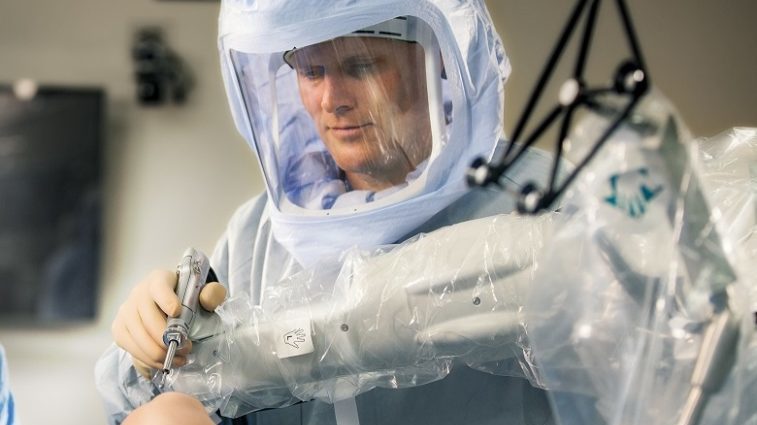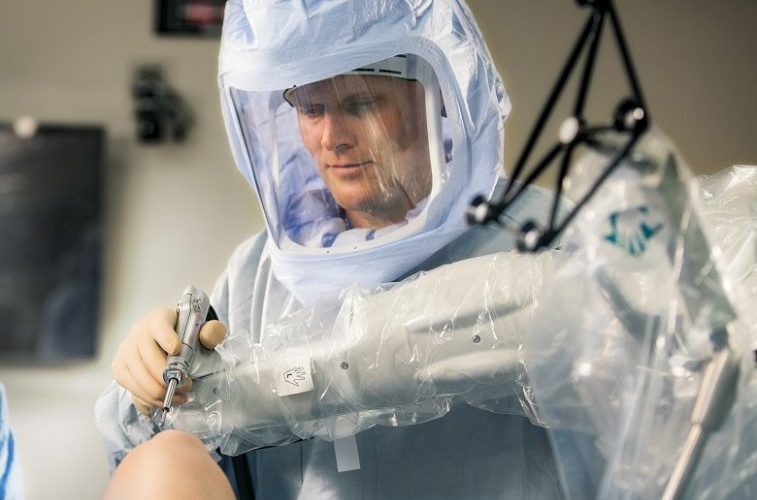Robotic-assisted surgery is option in hip or knee procedures
June 12, 2018
This paid piece is sponsored by Sanford Health.
If you or someone you know is considering hip or knee replacement surgery, there’s a relatively new technology that’s changing the experience for both the patient and the surgeon known as Mako robotic-arm assisted surgery.
The orthopedic technology provides surgeons with a 3-D model of their patient’s joint to prepare before surgery and unparalleled precision, flexibility and control during surgery. It is available at Sanford Orthopedics & Sports Medicine.
“The Mako system allows surgeons to perform more precise surgery in total hip and total knee, and partial knee replacements,” said Dr. Timothy Walker, orthopedic surgeon at Sanford Health. “It’s another tool that surgeons can use to help patients recover faster and have a better, longer-lasting replacement.”
How it works
It starts with a CT scan of your hip or knee joint. That image is used to build a 3-D virtual model, which is loaded into the Mako system’s software. Then, surgeons can access your personalized pre-operative plan, allowing them to be better prepared before they ever enter the operating room.
During the procedure, the surgeon guides the robotic arm based on the pre-operative plan with computer assistance. This technology allows the surgeon to remove bone and position the hip or knee implant with the highest level of accuracy.
“There are a lot of targets we’re trying to hit during hip and knee replacements,” said Dr. Dustin Bechtold, an orthopedic surgeon at Sanford Health. “This technology lays out a predetermined plan to follow during surgery and helps surgeons provide the most accurate placement and alignment of an implant according to the treatment plan.”
How it helps
For patients suffering with hip or knee pain, finding relief with the least risk and potential complications is the ultimate goal.
The robotic-assisted total hip replacement may provide a variety of benefits including:
- Accurate placement of the hip implant, which can reduce the chance of hip dislocation.
- More consistency in leg length, potentially decreasing the need for a shoe lift.
“I’m most excited to use this technology for partial knee replacements,” Bechtold said. “With increased precision and placement, we may be able to offer partial replacements to patients who previously may have tried a scope with too much arthritis or waited until the arthritis was bad enough to warrant a total replacement. The Mako technology is bringing an innovative new approach that could allow even more patients to find relief from their knee pain.”
Other potential benefits of robotic-arm assisted partial knee replacements include:
- Resurfacing only the arthritic portion of the knee.
- Preserving healthy tissue and bone.
- A more natural feeling knee after surgery.
- Quicker recovery and shorter hospital stay.
Bechtold added that he anticipates the Mako technology will be used for other surgical procedures in the future, but he’s excited for what it offers his patients today.
“This is a new and unique tool for the people in this region,” he said. “Although not needed for every patient, Mako technology is one more way to help patients who struggle with joint pain return to a more active, enjoyable lifestyle.”








